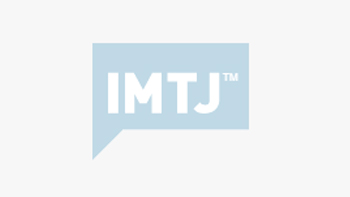1.Ageing customers
Baby boomers are the fastest growing demographic in the world, and spas are showing more awareness of the needs of older spa-goers. Many spas are now incorporating physiotherapists, chiropractors and osteopaths who focus on rejuvenation of joints, pain relief and mobility. Thermal bathing is also seeing a renaissance as the benefits of soaking are rediscovered. Woe is the spa that attempts to label this active affluent group. The days of ‘over 65’ as a catchall category will soon become ancient history. There is a huge difference between a 70 year old who plays tennis three times a week and an 85-year-old seeking pain relief.
2.Asia as a destination
Asia has had a profound impact on the spa industry. Yoga, Thai massage, Ayurvedic medicine and acupuncture are staples on many spa menus, and the Zen nature of Asian design can be seen in spas worldwide.There is an explosive growth of hotel/spa development within Asia (a market of 4.1 billion people), especially within the two fastest-growing world economies, China and India. These markets are developing at breakneck pace, unleashing massive opportunities for hotel/spa development. Asia-Pacific has the largest number of spas and hotels under development of any region in the world, and by 2015, China will have 100 million outbound travellers, many seeking a luxury break that includes a Westernised spa experience.
3. More salt
Healing traditions that involve basking in salt caves or water may be centuries old, but they are coming of age in some of the most modern spas. The benefits to skin, breathing and rejuvenation are making salt therapy one of the hottest trends to watch in 2011. Clinical trials reveal salt is beneficial for respiratory illnesses like asthma and skin conditions such as acne and psoriasis. Spas are finding stylish new ways to recreate the natural salt cave microclimate, infusing salt and negative ions into the air. Some examples have encrusted, stalactite-drenched grottos of tons of imported Himalayan salt crystals, or have created hyper-modern rooms made of sea salt blocks.
4.Branding experiences
Traditionally the territory of standalone spas, the industry is moving rapidly in the direction of branded experiences. 2011 will be a watershed year for franchised/branded spas as consumers seek the consistency of treatments they know and love, and major players expand into new markets. Look to see a brand new world of spa lines going global and offering consumers a consistent experience wherever they travel.
5. Price deals
Gone are the days when coupons were unfashionable things people snipped out of the newspaper and spas would not dream of using the term deal. Internet coupons and online group-buying deals have burst onto the global scene, and the old-fashioned deal has morphed into an online industry. With spa and wellness deals a mainstay of some sites, millions of people are now expanding their spa horizons, trying new experiences they would not have without the ‘50%-75% off’.
6. Scientific proof
Is there scientific proof that massage reduces stress? Are mudpacks and mineral-baths medically proven to alleviate pain? The answer, in many cases, is yes. Get ready for a new era where more questions about the effectiveness of spa therapies will be asked, as the emphasis on the science behind spa health heats up. With more medical professionals embracing integrative/alternative medicine, expect clinical studies to accelerate. These promising evidence-based initiatives may ultimately prove the bedrock for future industry growth.
7. Local sourcing
A current trend that complements the move toward branded spas is the desire for authenticity and immersion in the traditions and elements of a spa’s local environment. It’s not just about sourcing the restaurant menu from local suppliers; there is an increase in spas who have fully embraced the local trend with the farm-to-table movement and have extended it to farm-to-massage”. Locally sourced fruits, herbs and honey are grown on site, and then dished up in both meals and in spa treatments.
8. Search for beauty
Beauty-seekers are taking treatments are far beyond Botox into stem-cell facials and plasma therapy. People are tolerating more pain as long as it delivers results. Derma-rolling hurts, chemical peels can be uncomfortable and the zapping of lasers is painful. Then there are boot camps, Rolfing and Bikram yoga, where pain meets pleasure.
9. Fast spas
“In a New York minute” is jargon for how things move faster in hectic New York City. It is also the name of a suite of mini (15- to 30-minute) spa treatments. The spa industry is responding, with early and late-night opening for money-long time-short customers. The trend toward express, sampler or mini-sized treatments will continue to rise. The explosion of airport spas worldwide plays into the express trend neatly, as does the decline of elaborate rituals at many spas, to get right to the heart of the matter: the therapeutic treatment.The quest for stress-free spa efficiencies will mean more spa-goers embracing 24/7 online appointment booking, and mobile apps helping them find and book spas on the fly.
10. Special events
Increasingly, spas are developing distinctive specialty programs to draw customers seeking a unique group experience. While destination spas have been offering yoga and healthy cooking weeks for years, retreats now span everything including a high-flying trapeze experience. Spas and resort destinations will find creative new ways to attract consumers.








 ©2024 All rights reserved LaingBuisson
©2024 All rights reserved LaingBuisson 


